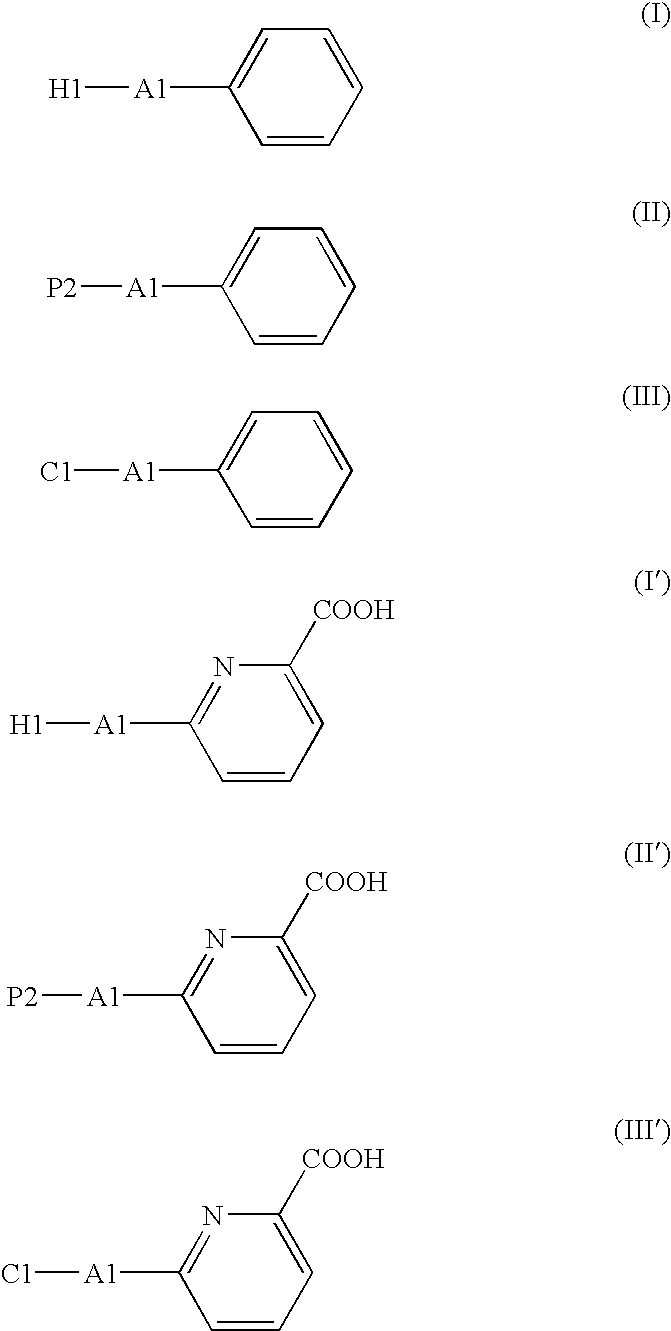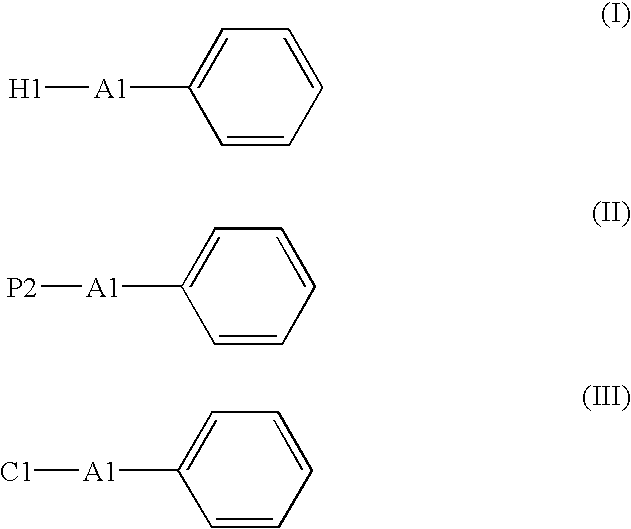Process for Producing Picolinic Acid Compounds
a picolinic acid and compound technology, applied in the field of biocatalytic engineering of lowmolecular weight organic compounds, can solve the problems of low added value of ring cleavage products, difficult to obtain picolinic acid compounds within molecule boundaries, and no method for producing such picolinic acid compounds based on bioengineering methods are known, so as to achieve convenient and efficient effects
- Summary
- Abstract
- Description
- Claims
- Application Information
AI Technical Summary
Benefits of technology
Problems solved by technology
Method used
Image
Examples
example 1
Construction of Plasmid pSHF1072 for Simultaneous Expression of Modified Aromatic Ring Dioxygenase [bphA(2072)] / Aromatic Ring Dihydrodiol Dehydrogenase / Aromatic Ring Diol Oxygenase
[0096]A gene encoding a large subunit of aromatic ring (biphenyl) dioxygenase derived from the LB400 strain of the genus Burkholderia (bphA1) (GenBank accession No. M86348) and a DNA encoding a large subunit of aromatic ring (biphenyl) dioxygenase derived from the Pseudomonas pseudoalcaligenes KF707 strain (bphA1) (GenBank accession No. M83673) were isolated by PCR using bphA1 primers comprising consensus flanking sequences. The nucleotide sequences of the bphA1 primers are as follows:
Forward primer 1:(SEQ ID NO: 3)5′-CCGAATTCAAGGAGACGTTGAATCATGAGCTCAGC-3′Reverse primer 1:(SEQ ID NO: 4)5′-TTGAATTCTTCCGGTTGACAGATCT-3′
[0097]In addition, the forward primer 1 contains a Sac I site and the reverse primer 1 contains a Bgl II site. At both ends of the forward and the reverse primers, EcoR I sites are added (all o...
example 2
Construction of plasmid pBPA715-707BC for simultaneous expression of modified aromatic ring dioxygenase [bphA(715-707)] / aromatic ring dihydrodiol dehydrogenase / aromatic ring diol oxygenase
[0107]The structures of large subunits (BphA1) of biphenyl dioxygenase of various biphenyl-degrading bacteria were compared. Thus, two highly conserved amino acid sequences were found to be present among them. Specifically, these were an amino acid sequence (conserved region 1) represented by Asp-Lys-Ser-Ile-Lys-Val-Phe-Leu-Asn-Gln-Cys-Arg (SEQ ID NO: 5) corresponding to 90th to 101st amino acids of the amino acid sequence of BphA1 derived from the Pseudomonas pseudoalcaligenes KF707 strain and an amino acid sequence (conserved region 2) represented by Asp-Asp-Gly-Glu-Asn-Trp-Val-Glu-Ile-Gln-Lys-Gly (SEQ ID NO: 6) corresponding to 386th to 397th amino acids of the same.
[0108]Biphenyl-degrading bacteria, the Pseudomonas graminis KF701 strain, the KF702 strain of the genus Pseudomonas, the Comamonas ...
example 3
Preparation of Escherichia coli Transformant
[0116]Procedures for preparing Escherichia coli transformants are as described below.
[0117]The recombinant Escherichia coli JM109 having the modified aromatic ring dioxygenase gene, aromatic ring dihydrodiol dehydrogenase gene, and aromatic ring diol oxygenase gene prepared in Examples 1 and 2, that is, Escherichia coli (pSHF1072) or Escherichia coli (pBPA715-707BC), was subjected to liquid culture in an LB medium (1% trypton, 0.5% yeast extract, and 1% NaCl) supplemented with 150 μg / ml ampicillin (Ap) until the first half of the logarithmic phase. The resultant was suspended in glycerol to a final concentration of approximately 30% and then placed in a deep freezer at a temperature between −70° C. and −80° C., thereby preparing a glycerol stock strain. Furthermore, as a control, Escherichia coli (JM109 strain) having an Ap-resistant vector alone, such as pUC118, was also similarly cultured, so as to prepare a glycerol stock strain.
PUM
| Property | Measurement | Unit |
|---|---|---|
| Fraction | aaaaa | aaaaa |
| Fraction | aaaaa | aaaaa |
| Fraction | aaaaa | aaaaa |
Abstract
Description
Claims
Application Information
 Login to View More
Login to View More - R&D
- Intellectual Property
- Life Sciences
- Materials
- Tech Scout
- Unparalleled Data Quality
- Higher Quality Content
- 60% Fewer Hallucinations
Browse by: Latest US Patents, China's latest patents, Technical Efficacy Thesaurus, Application Domain, Technology Topic, Popular Technical Reports.
© 2025 PatSnap. All rights reserved.Legal|Privacy policy|Modern Slavery Act Transparency Statement|Sitemap|About US| Contact US: help@patsnap.com



